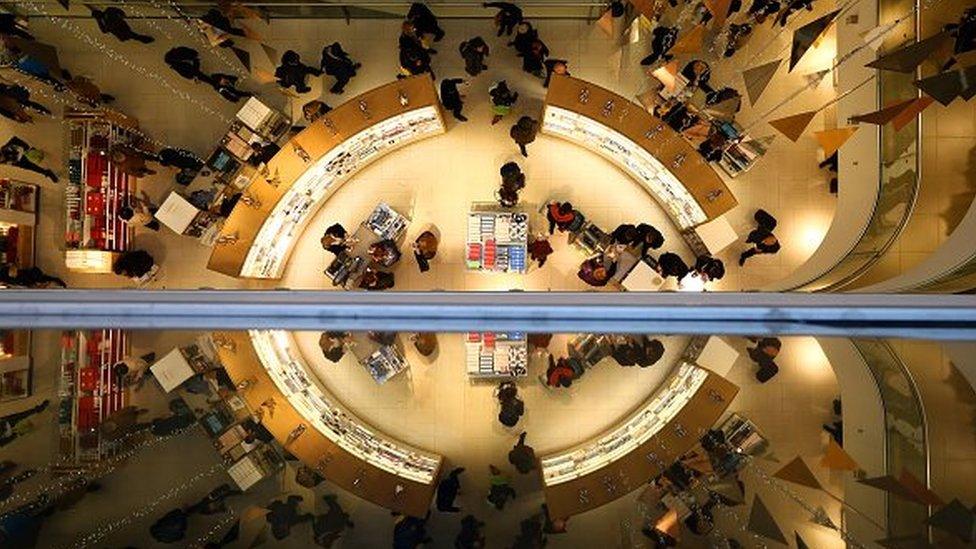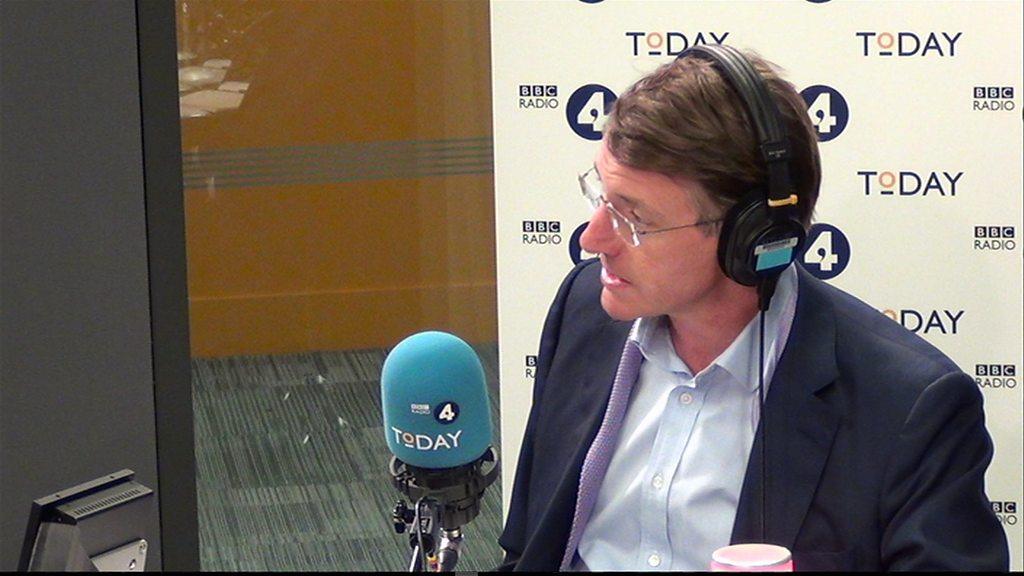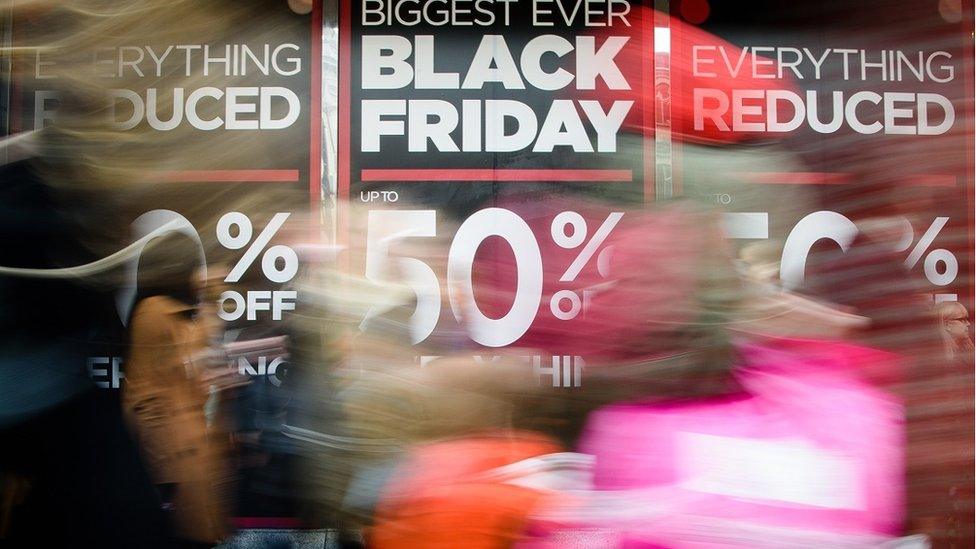John Lewis gets Christmas sales boost
- Published

John Lewis sales rose 5.1% over "three peaks" of the Christmas period, the retailer has said.
Black Friday, Christmas and post-Christmas trading at John Lewis was boosted by online sales, which rose 21.4%, offsetting a fall in store sales.
Like-for-like sales at Waitrose, which is part of the same group, fell 1.4%.
John Lewis Partnership chairman Sir Charlie Mayfield told the BBC that "grocery is challenging".
However, he said: "We're pleased with our overall results, we think they'll be pretty much in line with the market."
Chairman of the John Lewis Partnership, Sir Charlie Mayfield: "We had a strong clearance and our fashion sales were up 6%."
He added that John Lewis' Black Friday sales had been "more heavily weighted towards online" than in previous years, and that its shops had not been as busy as on previous Black Fridays.
John Lewis sent out 18% more parcels than a year earlier in the Black Friday sales period - peaking at five parcels a second in its busiest hour, John Lewis Partnership said in a statement, external.
John Lewis boss: 'Tough' groceries market
Sir Charlie added that shop sales in John Lewis' post-Christmas "clearance" sales had risen 16%.
The employee-owned firm, which runs 46 John Lewis shops, shrugged off unusually mild December weather as fashion, home and technology sales were boosted.
The mild weather adversely affected retailers including Next, which said on Monday that its trading performance in the run-up to Christmas had been "disappointing".
In the six weeks to Saturday 2 January, total sales at John Lewis Partnership were up 4.1% from the same period last year to £1.8bn.
'Challenging market'
UK supermarkets have been engaged in a long-running price war, while discounters Aldi and Lidl have also been steadily taking market share from the biggest grocers.
Sir Charlie said Waitrose had seen a growth in customer numbers of about 7%, but grocery was "a tough market" which was deflationary.
"Prices are falling. The fact is, if broccoli is half price, you and I have to eat twice as much for us to make the same money," Sir Charlie said.
Waitrose peak trade "came particularly late this year", but the firm had record trading days on 23 and 24 December, John Lewis Partnership said.
Price drops
In December the rate of food price deflation was 0.3%, the same pace as November's rate, according to British Retail Consortium (BRC) figures.
Non-food prices fell in December at a 3% rate, and overall UK shop prices fell 2%, the retail lobby group said.
"For the last two years and eight months, customers have been able to fill their baskets, whether virtual or physical, and pay less for their goods than the year before," said BRC chief executive Helen Dickinson.
"A number of key commodities in the retail supply chain - in particular, oil which is now trading under $40 per barrel - have fallen dramatically recently and the impact of these falls will continue to make its way through to shop prices for some time to come," she said.
Online effect
Sophie McCarthy, an analyst at Conlumino, said the John Lewis Partnership's December trading figures had been "robust".
She said that the retailer's "emphasis on quality and service" and its investment in online shopping "continues to be favoured by consumers".
John Lewis had a "surge" in online trading during the period, helped by sales made through mobile devices, she said.
"Click-and-collect orders also rose this year, with half of online orders collected in this way," she added.
- Published6 January 2016

- Published27 November 2015

- Published27 November 2015
